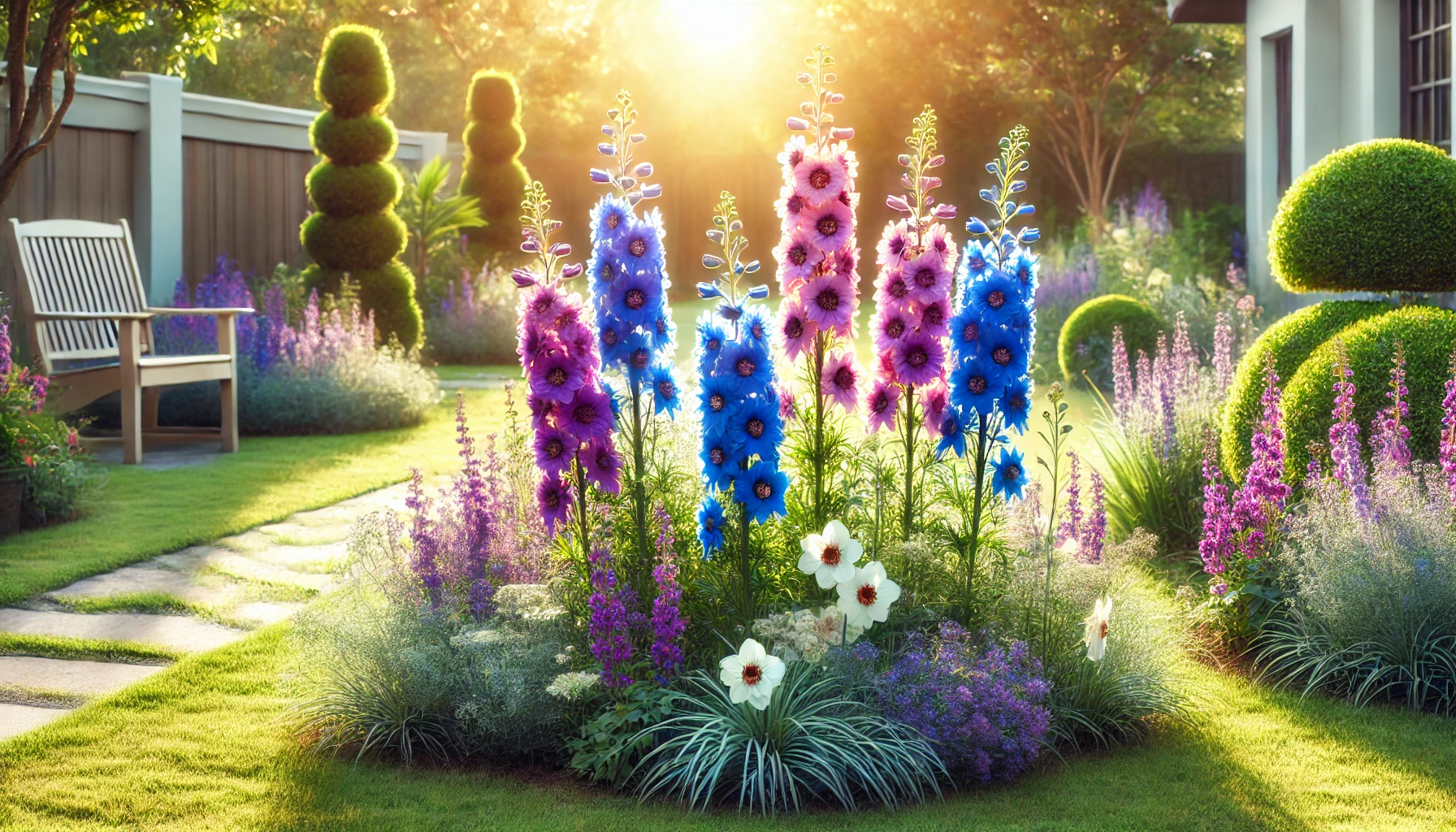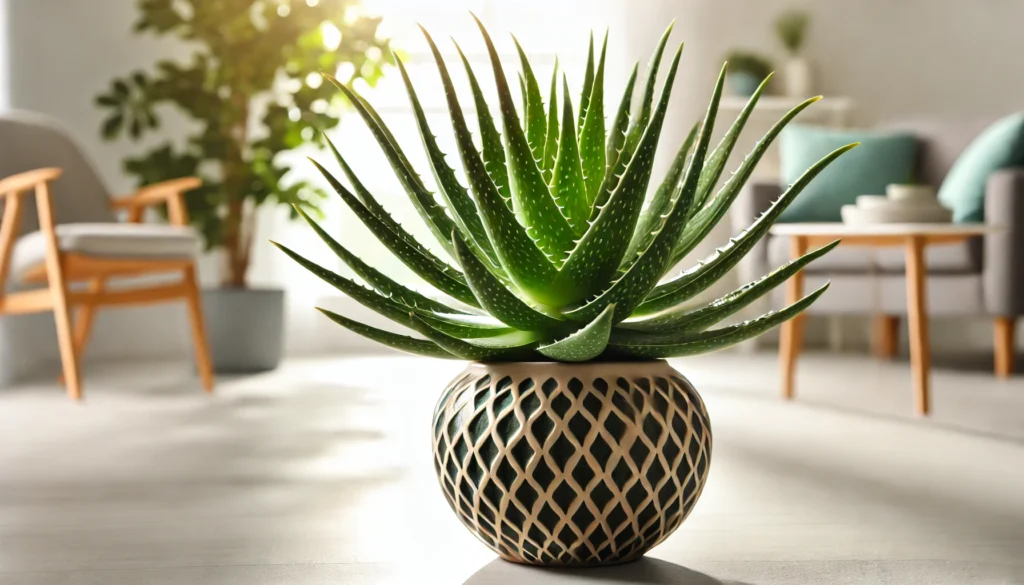
Delphiniums, known for their towering spikes of vibrant blue, purple, pink, or white flowers, are truly the giants of the garden. Formally called Delphinium spp., these perennials can grow anywhere from 2 to 6 feet tall, making them a dramatic focal point in any landscape. Their dense, colorful flower spikes stand tall against a backdrop of lush, deeply lobed leaves, adding both height and beauty to garden borders.
A Glimpse into History and Ideal Growing Conditions
Delphiniums have a long history, with roots tracing back to ancient Greece where they were named after the Greek word for dolphin, “delphis,” due to the shape of their flower buds. These plants are native to the Northern Hemisphere and thrive in temperate regions. Delphiniums prefer cool climates and do best in well-drained, rich soil with a slightly alkaline pH. They are sun lovers, requiring at least 6 hours of sunlight each day to flourish. However, in areas with intense summer heat, they appreciate some afternoon shade.
Are Delphiniums Safe for Pets?
Delphiniums, while beautiful, are toxic to both humans and pets. All parts of the plant, especially the seeds and young leaves, contain alkaloids that can cause severe reactions if ingested. In pets, symptoms include vomiting, drooling, muscle weakness, and in severe cases, respiratory failure. It’s important to keep Delphiniums out of reach of curious animals and children.
Safe Alternatives for Pet-Friendly Gardens
For those who want to maintain a pet-friendly garden, consider alternatives like Bee Balm (Monarda spp.), Coneflowers (Echinacea spp.), or Larkspur (Consolida ajacis), which offer similar visual appeal without the toxicity.
Best Practices for Caring for Delphiniums
Caring for Delphiniums requires attention to detail, but the rewards are well worth it. With proper care, these stunning plants will bloom profusely, adding height and drama to your garden.
Watering and Humidity
Delphiniums need consistent moisture, especially during their growing season. Water them regularly, aiming to keep the soil evenly moist but not waterlogged. It’s important to avoid getting water on the leaves, as this can promote fungal diseases. In dry climates, adding mulch around the base of the plants can help retain moisture and keep the roots cool.
Soil, Light, and Temperature
Plant Delphiniums in well-drained, fertile soil rich in organic matter. They thrive in full sun, but in hotter climates, they benefit from some afternoon shade. Delphiniums prefer cooler temperatures and may struggle in regions with hot, humid summers. In these areas, providing some shade and extra watering can help them survive the heat.
Common Problems and Remedies
Delphiniums, despite their beauty, can be prone to a few issues. Powdery mildew and other fungal diseases can be a problem, especially in humid conditions. To prevent this, ensure good air circulation around the plants, and avoid overhead watering. Staking is often necessary for taller varieties to prevent the flower spikes from bending or breaking in strong winds. Pests like slugs and snails can also be an issue, particularly in damp conditions. Using organic slug repellents or traps can help protect your plants.
Propagation and Benefits
Delphiniums can be propagated by seed, division, or cuttings. Growing from seed is the most common method, though it requires patience as Delphiniums can take a year or two to bloom. Dividing established plants every few years helps rejuvenate them and encourages more vigorous growth. Delphiniums are not only stunning in the garden but also attract pollinators like bees and butterflies, adding life to your outdoor space.
Final Thoughts
Delphiniums are a majestic and rewarding addition to any garden, offering height, color, and a touch of elegance. While they require some care and attention, the results are well worth the effort. Just be mindful of their toxicity to pets and consider safe alternatives if you have animals at home. With the right care, Delphiniums will reward you with stunning, towering blooms that are sure to impress.
Stay connected with the world of plants! Subscribe to Phylofy for expert gardening tips, DIY projects, and eco-friendly inspiration. Join our community and nurture your love for nature. Don’t miss exclusive content and updates. Subscribe now!



